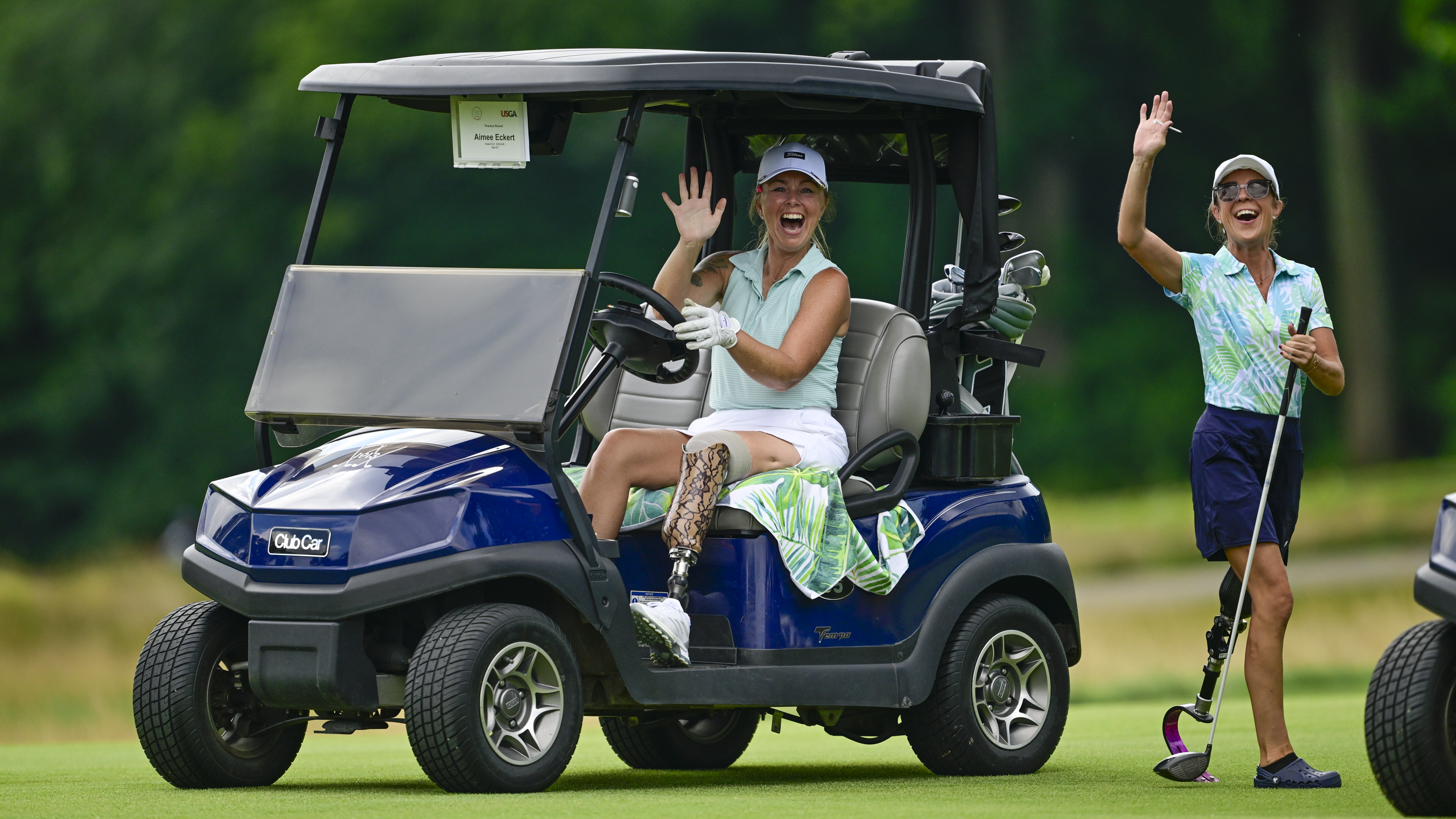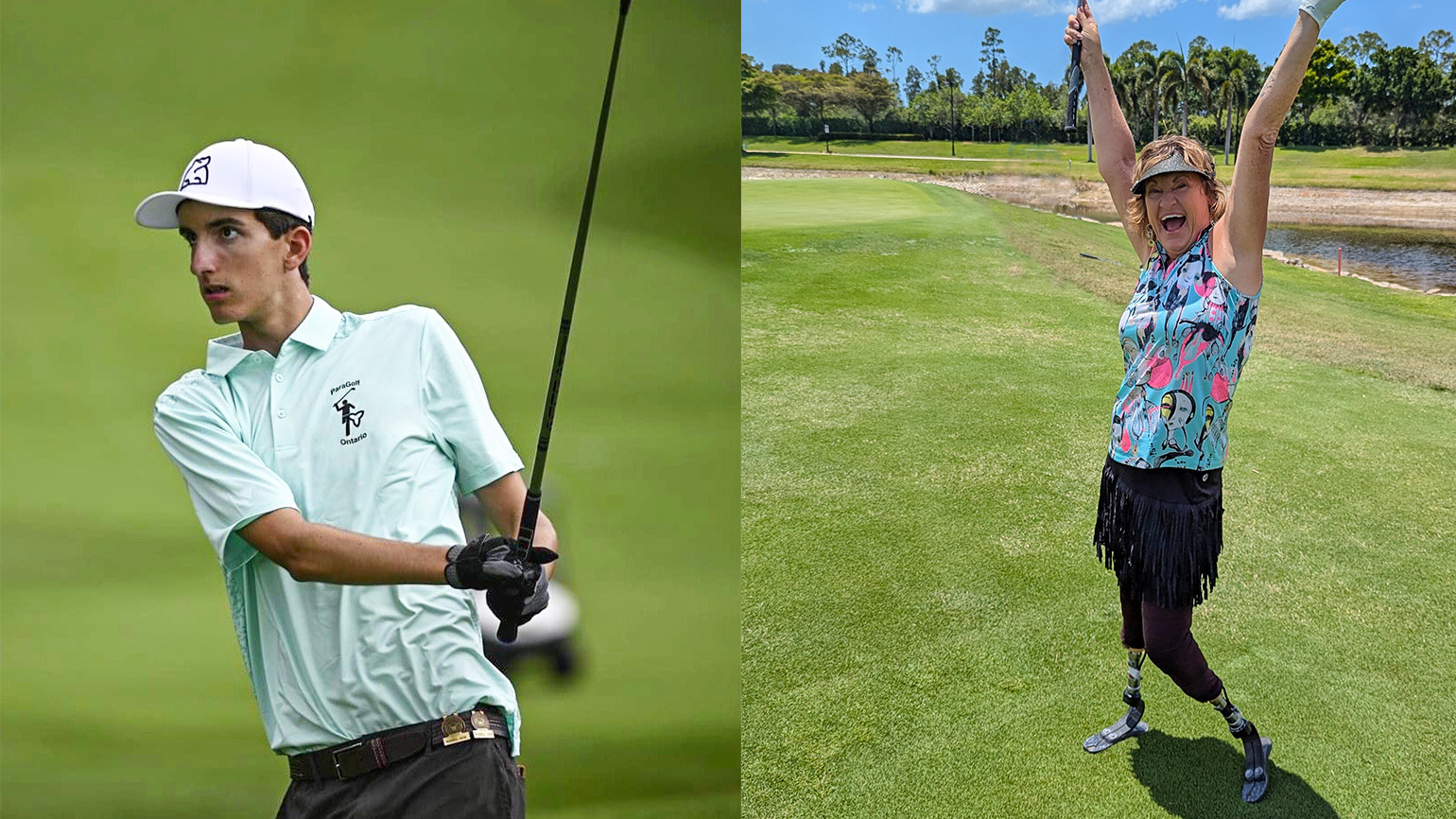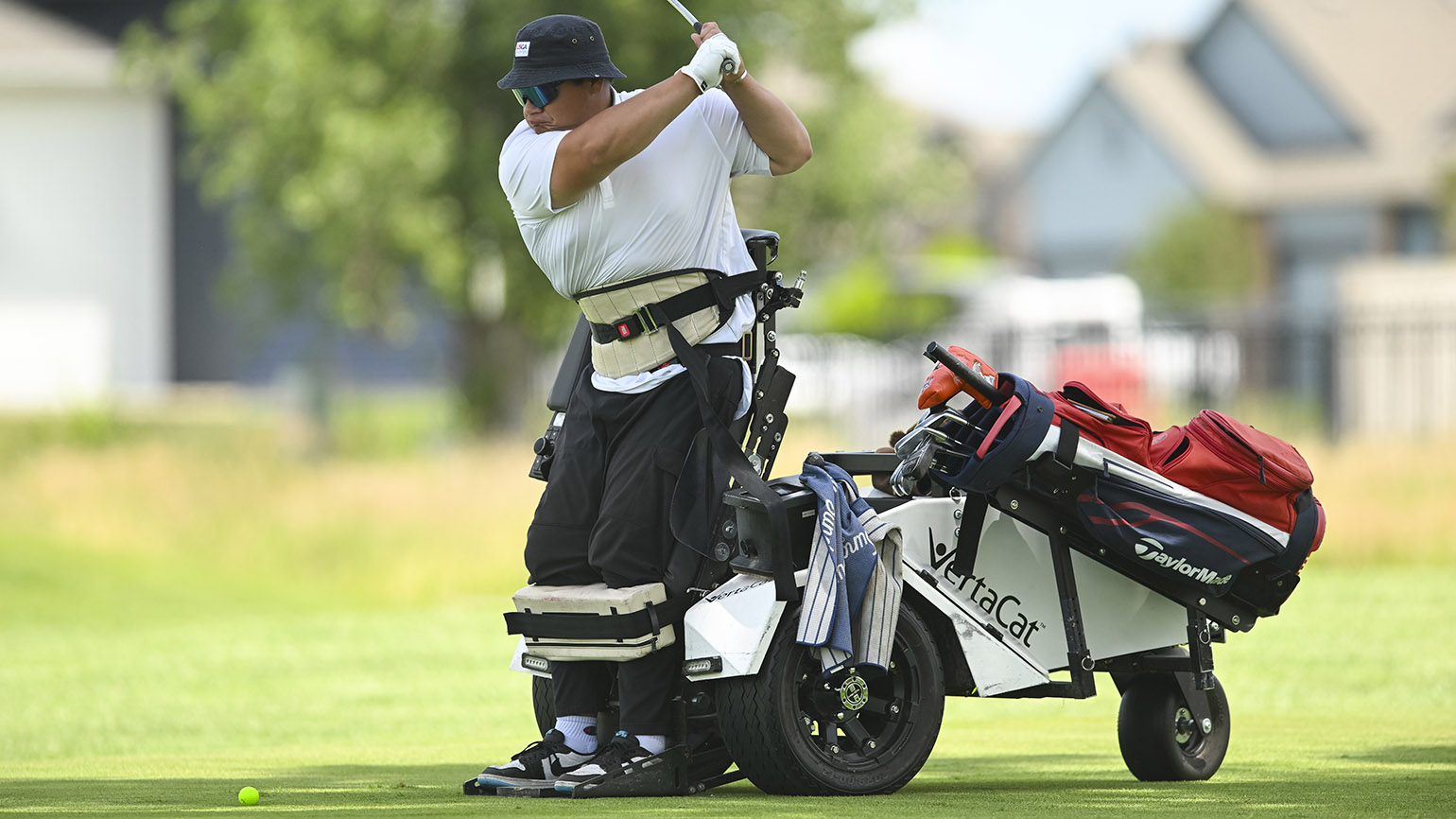3 Things to Know: 4th U.S. Adaptive Open
This year’s championship is enjoying something of a full-circle (Beltway?) moment. It was at the 2017 USGA Annual Meeting in Washington, D.C., when USGA Chief Championships Officer John Bodenhamer announced an organizational commitment to create a national championship for adaptive golf. Now, just 15 miles away at Woodmont Country Club, 96 players representing eight impairment categories will compete in the 4th U.S. Adaptive Open on the club’s South Course.
“We’re really happy to be here; this place is amazing,” said Stephanie Parel, the USGA’s director of the U.S. Adaptive Open. “The course was renovated over the last few years with adaptive golf in mind, and they did a terrific job.”
Woodmont traces its roots to 1913 with an initial 9-hole course. In 1961, it became a multi-course facility when the 18-hole South opened to join the previously existing 18-hole North, which has been a site of U.S. Open Final Qualifying as part of “Golf’s Longest Day” since 1987. It also hosted the 2020 U.S. Women’s Amateur, won by Rose Zhang. This week, though, it’s the engaging South Course that takes center stage.
Here are 3 things to know heading into Monday’s opening round.
Versatile Venue
Woodmont is hosting the U.S. Adaptive Open this year and again in 2026. The two-year commitment inspired club leadership to hire course architect Joel Weiman to undertake a renovation of the South Course that better accommodates the specific needs of adaptive players while also raising the overall caliber for future events (Woodmont will use both courses to host the 2028 U.S. Junior Amateur).
“The biggest change we made for this championship is the bunkering,” said Ryan Severidt, Woodmont’s director of grounds. “The entrances to the bunkers are now flat in a lot of areas, allowing for more accessibility. Second, the teeing grounds now have a continuous flow of short grass that provides the ability to put tee markers almost anywhere.”
While seated players using solo-rider golf carts will benefit most from the changes to bunkers, the renovation was not one-dimensional. There are multiple holes where fairways run together and bunkers come right up to the edges of greens, an homage to Golden Age architecture. Those types of design characteristics are not only enhancements for adaptive golf, but for everyone.
“We made a concerted effort to think about this championship but to still try to keep the overall esthetics very pleasing,” said David Dorn, Woodmont’s director of golf. “The goal was to make a golf course that is a challenge to everyone but also playable for everyone.”
Based on the feedback from players so far in the practice rounds, Woodmont accomplished that goal.
American Breakthrough?
Unlike the women’s side of the field, which has had three different American-born overall champions, American men have so far been shut out from raising the U.S. Adaptive Open trophy. Simon Lee of the Republic of Korea won the inaugural championship in 2022, while Kipp Popert of England is the two-time defending men’s champion. Both are in the field this week.
One American who has high hopes to become the first to win his national title also happens to have local ties. Ford Martin, a 32-year-old from Potomac, Md., made his championship debut last year and tied for 5th place overall with a 5-under-par total of 211 (75-70-66). Martin was born with a club foot, and doctors expressed doubt that he would ever walk normally, much less compete in sports at a high level.
Rather than listen to the naysayers, Ford persevered and played goalie on his high school lacrosse team, an experience he credits with helping him in his golf career.
“The mindset of a lacrosse goalie is that you know you're going to get scored on, but you need to be able to reset for the next shot,” said Martin. “I try to bring that mindset to golf. Don't get too high or too low, and be ready for the next shot.”
Knowing he’ll have friends and family here to cheer him on, Martin is embracing the challenge of the U.S. Adaptive Open.
“There have been three Adaptive Opens so far and no American winners,” he said. “I think I have a good shot to be the first one, and that’s definitely a goal of mine this week. I'm in a good spot with my game.”
Field of Dreamers
The 96 players teeing it up at Woodmont this week make up the most diverse field of any of the USGA’s 15 championships. Competitors range in age from 16 to 75, hailing from 34 U.S. states and 10 different countries. Most notably, they exemplify that a person’s physical or intellectual impairment is merely a part of who they are, not a barrier to their golf dreams.
Cassie Sengul, 19, of Manassas, Va., was born with cerebral palsy. After trying numerous other sports during her childhood, she found golf and made her debut in this championship last year.
“That was my first adaptive tournament, and it was really special,” said Sengul. “Knowing all the people I am surrounded with this year, I realize it’s more about a community winning, not just a single person.”
That spirit of camaraderie is once again widespread around the Woodmont grounds. From the Saturday evening players’ dinner, practice rounds and more casual play on the 9-hole Loop course, this community of competitors sees the bigger picture.
Even so, starting on Monday and continuing through the 36-hole cut on Tuesday and the final round on Wednesday, there are trophies and category titles on the line. Tune into Golf Channel for highlights during “Golf Today” and “Golf Central” on Monday, July 7 and Tuesday, July 8, followed by live final-round coverage on Wednesday, July 9 from 2-4 p.m. ET.















